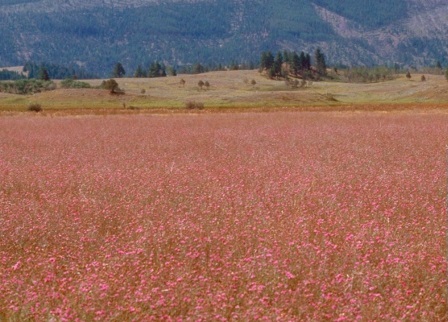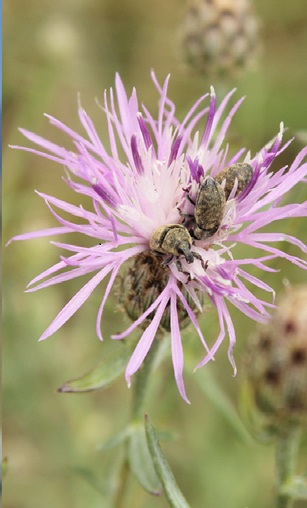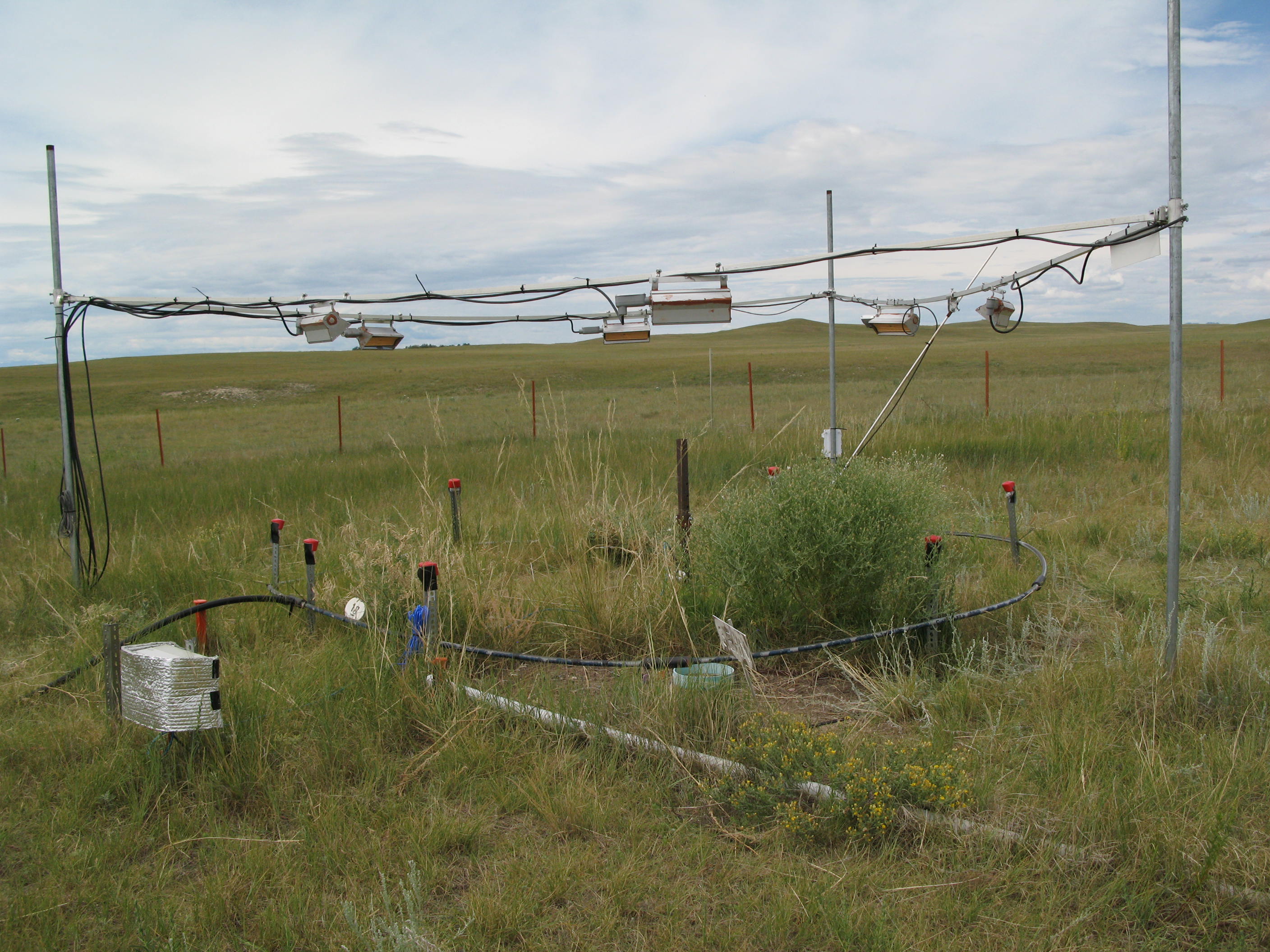
Fear no weevil: weed control insects unfazed by climate change
By Julie Kray & Justin Reeves

Millions of acres of range and pasture lands across western North America are covered by non-native knapweeds1, including diffuse knapweed (Centaurea diffusa) and spotted knapweed (C. stoebe). Knapweeds are among the most tenacious plant invaders in North America, in part because creatures that eat knapweeds in their native home of Eurasia are missing from their new environment. Knapweeds outcompete and displace desirable forage plants for livestock and wildlife, and they can spread rapidly, producing anywhere from 1,000-18,000 seeds per plant1. Once they become established, restoring the original plant community may at first appear hopeless.

Enter the lesser knapweed flower weevil (Larinus minutus), a natural enemy of knapweeds in their native Eurasia. This weevil was introduced to North America in the 1990s as a biological control agent. Small in stature, but packing a serious punch, these hard-working weevils lay their eggs inside knapweed flowers. When the young weevil larvae emerge, they gobble up all of the developing seeds in the flower. With enough weevils, knapweed reproduction can be greatly reduced.
So far, biological control weevils have successfully limited the spread of knapweeds at several locations. This is encouraging news for land managers hoping to curb knapweed expansion in other areas. But climate change, rising CO2, nitrogen deposition, and disturbance of landscapes by humans may increasingly favor non-native plants2,3 and disrupt the ability of biological control agents to suppress invaders4. Will weevils be able to keep pace with knapweeds under future climate conditions?
We caught a glimpse of the answer at the Prairie Heating and CO2 Enrichment (PHACE) study in Wyoming mixed-grass prairie, where we planted diffuse knapweed in experimental plots exposed to warmer temperatures and higher CO2. Three years later, weevils found the knapweeds in our experiment and set up shop. Over two years, elevated CO2 increased knapweed seed production more than three-fold5. However, higher CO2 also increased the impact of weevils on knapweed reproduction. Weevils occupied a larger proportion of seed heads on high CO2 knapweed plants, and consumed thousands more seeds (on average, 3,930 seeds/m2, versus 500 seeds/m2 at ambient CO2). The net result: weevils reduced knapweed seed production by 24% with elevated CO2, compared to 11% without5. Unfortunately, this still left high CO2 knapweeds with more than twice as many seeds than ambient CO2 knapweeds. Warming effects on weevils were less conclusive, although we saw non-significant trends that weevils consumed more seeds with warming.

Why did weevils target the high CO2 plants? Under high CO2, knapweed plants developed more rapidly, and it appears that weevils chose the earliest flowering plants as homes for their larvae5. So, even as rising CO2 and temperature speed up knapweed growth, biological control weevils appear ready and able to take advantage of earlier developing flowers, and in turn, to obliterate thousands of knapweed seeds. This is especially encouraging because in other cases, climate change may move plant and insect life cycles out of sync with one another, making some biological control efforts less effective in the future4.
On balance, elevated CO2 greatly benefitted knapweed growth and seed production at PHACE, reinforcing concerns about its future invasion potential. However, weevils more strongly suppressed the more productive knapweeds, suggesting that they might be able to keep pace with knapweed’s spread, given more time. That capacity to respond to surging invader populations is unique to biological control, and could offer meaningful hope for land managers looking to get out of the weeds.
1. Duncan C.A. 2005. Diffuse knapweed, Centaurea diffusa In: Invasive plants of range and wildlands and their environmental, economic, and societal impacts (eds. Duncan, C.A. & Clark, J.K.). Weed Science Society of America Lawrence, KS, pp. 26-35.
2. Bradley, B.A. et al. Predicting plant invasions in an era of global change. Trends Ecol. Evol. 25, 310-318.
3. Blumenthal, D. M. et al. 2013. Invasive forb benefits from water savings by native plants and carbon fertilization under elevated CO2 and warming. New Phytologist 200: 1156–1165.
4. DeLucia, E.H. et al. 2012. Climate change: resetting plant-insect interactions. Plant Physiol. 160, 1677-1685.
5. Reeves, J.L. et al. 2015. Increased seed consumption by biological control weevil tempers positive CO2 effect on invasive plant (Centaurea diffusa) fitness. Biological Control 84: 36–43.
To read about more results from the PHACE study on EcoPress, see here, here, here, and here. For more on biological control, check out this excellent review. To learn more about knapweed management strategies, have a look at this and this.